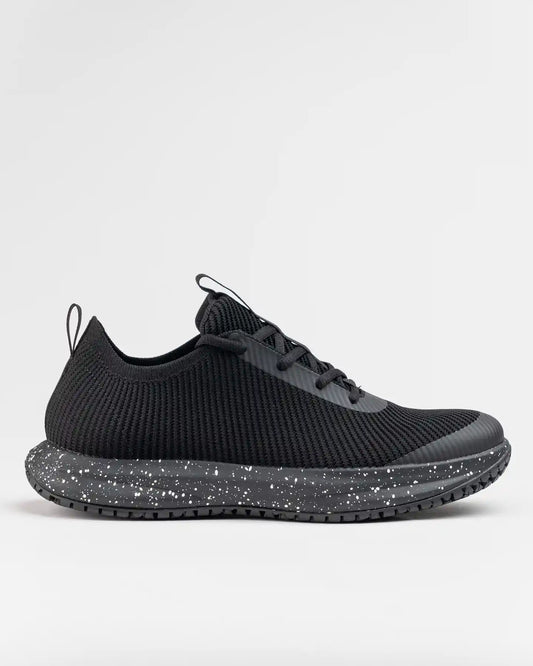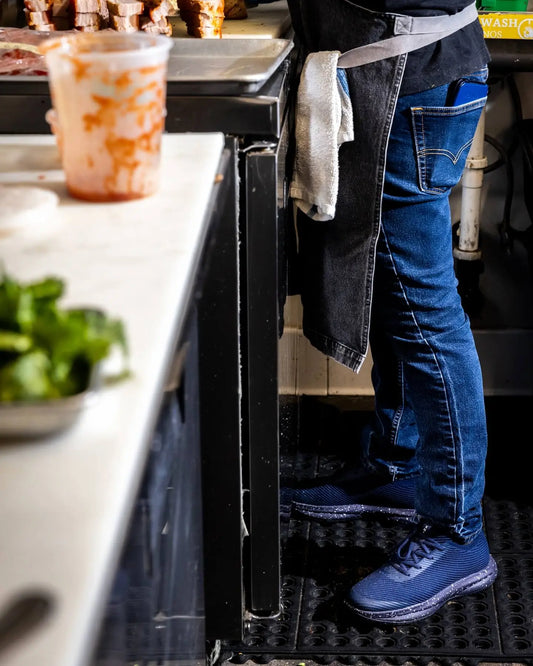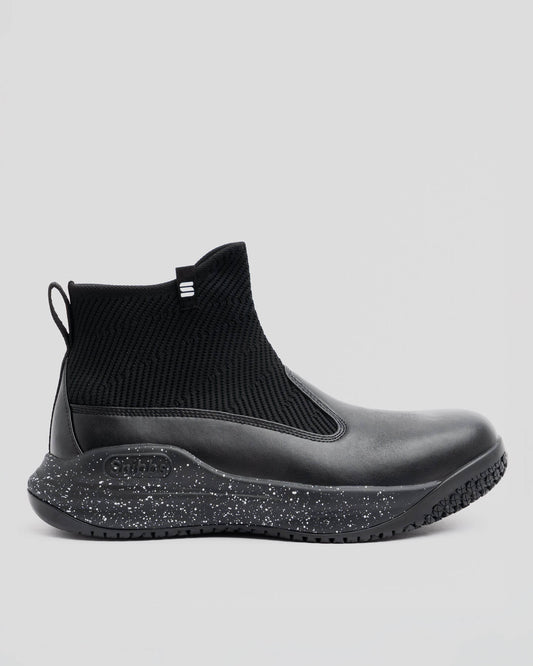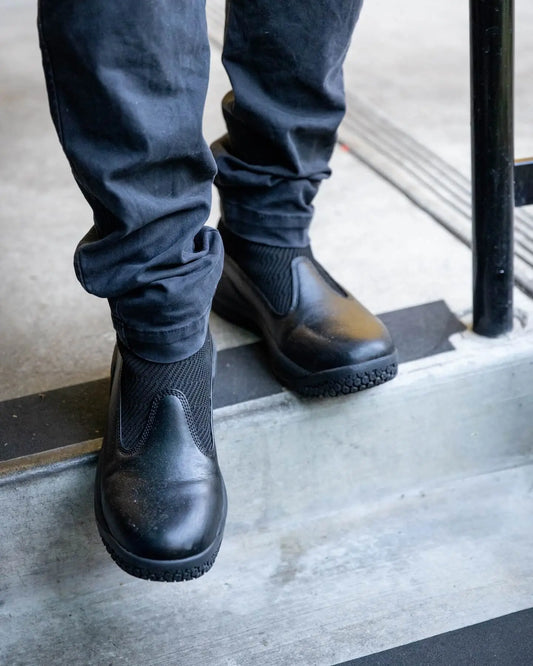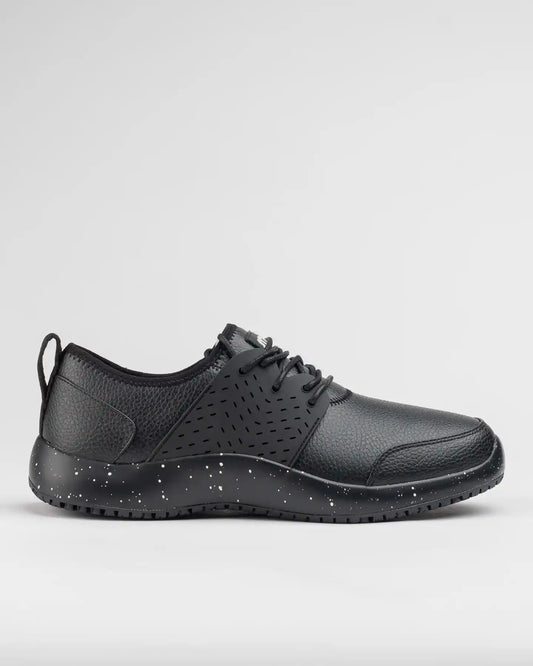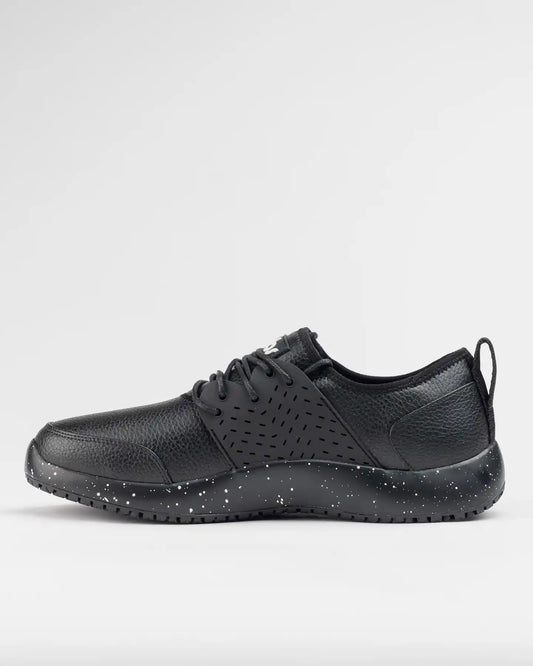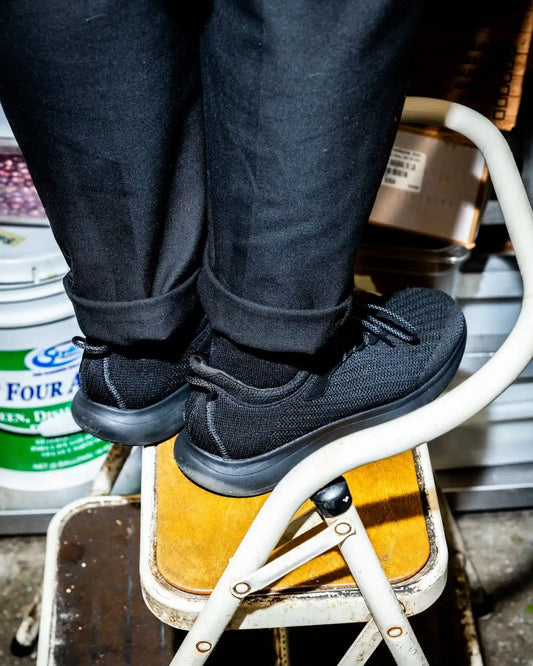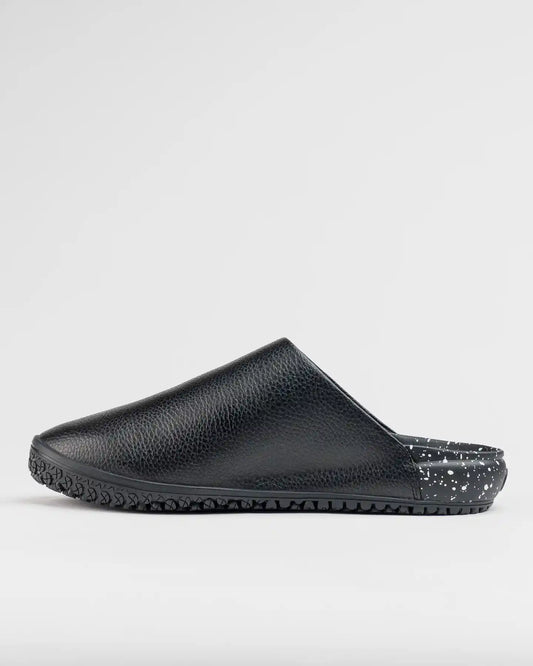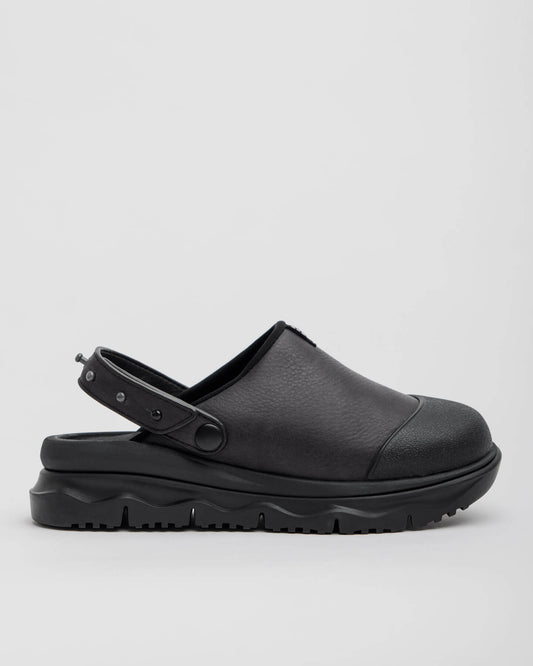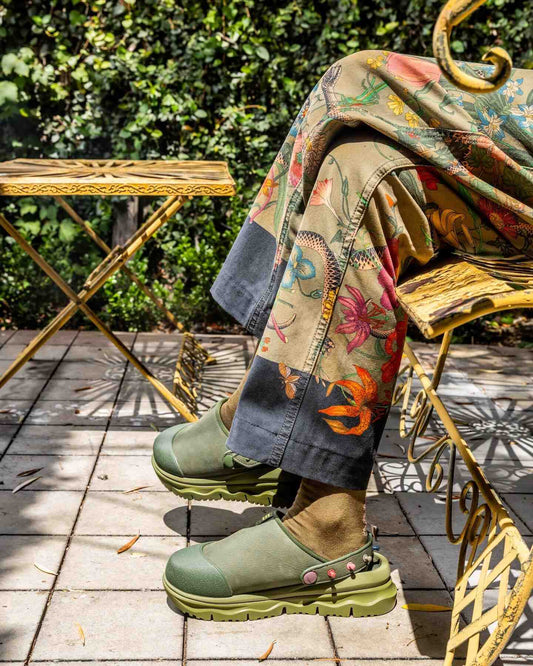10 Restaurant Safety Tips for Employees
Alex Kinejara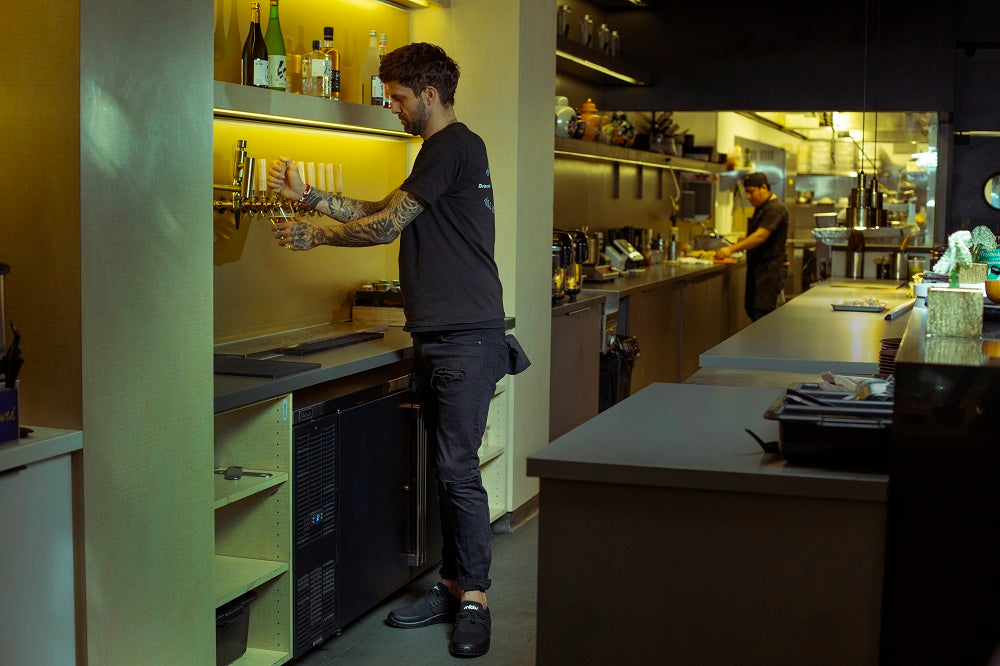
In 2019, more than 93,000 restaurant employees suffered nonfatal injuries while on the job.1 Those injuries include some of the most common hazards of the food service trade, from slips, trips, and falls, to burns, cuts, and puncture wounds.
Yet despite their disparate causes, many of the most common restaurant injuries can be minimized or avoided by following standard restaurant safety protocols. That’s what makes adequate safety training so important—when employees know the best ways to avoid accidents, minimize workplace dangers, and the appropriate way to respond when accidents do occur, everyone has a better chance of escaping their shifts unscathed.
Interested in learning more about how you can keep yourself, your co-workers, and your covers safe at work? Keep reading for 10 restaurant safety tips you can implement right away.
#1 Dress For Success
Maybe the most heard safety tip by a food service employee or restaurant worker is wearing safety footwear, such as non-slip restaurant shoes. Some of the most common restaurant injuries are the result of slips, trips, and falls. In fact, more than three million restaurant workers are injured each year from slip-and-fall accidents, with 39% of general liability claims against restaurants resulting from these injuries.2
But that probably comes as no surprise to anyone who’s ever worked in food service. Restaurant floors can quickly become a gauntlet of slip hazards once they’re hit with a shift’s worth of:
- Spilled beverages
- Splattered sauces
- Dripped oil and/or grease
Your best bet when it comes to safely navigating slick, slippery floors? Slip resistant work shoes, like the stylish options from Snibbs. Our durable rubber outsoles are designed for superior slip- resistance and grip, guaranteeing that you stay upright throughout your shift.
#2 Use Wet Floor Signs
Even if you’re wearing slip-resistant shoes, it’s never a smart idea to go charging full force across wet floors. Encountering slick surfaces by surprise can send even the most sure-footed server reeling. When spills happen, it’s important to spread the word so that anyone who passes through can avoid the area.
Fortunately, that’s what wet floor signs are for. Your restaurant likely has several, so find out where they are so you can use them at a moment’s notice. Wet floor signs are a great addition to safety procedures for preventing workplace injuries.
#3 Clear the Way
It isn’t only wet floors that can trip you up at work. When things get busy, restaurants can become cluttered with boxes, brooms, mops, bus buckets, server trays, tray stands, and all the other tools you use throughout your shift. When these items aren’t kept in their designated places, they can easily become tripping hazards.
Fortunately, following a couple of restaurant safety tips can keep you and your coworkers safe from trips and falls. It’s up to everyone to be diligent about:
- Keeping pathways clear
- Putting items away after using them
#4 Use Your Signal Words
One of the requirements of working in the food service and restaurant industry is a sense of urgency. But when you’re zooming through the dining room, darting around corners, and speeding through the kitchen, you risk colliding with your co-workers, kitchen equipment, and even the walls—any of which can cause injury.
The solution? Using signal words. Calling out your intentions is common in most restaurants. It’s almost like you’re giving a real-time play-by-play so that those around you know where you’re going next. Common signal words and phrases include:
- Coming in/out
- Behind
- Corner
These verbal cues only work if everyone knows what they mean, so it’s important to know the lingo in your specific restaurant and use it appropriately.
#5 Prevent Restaurant Fires
Open flames from grills and stovetops. Heated lamps and flammable materials. Electrical fires and grease fires. These are just some of the factors that contribute to the more than 5,000 fires that happen in restaurants every year.3
Restaurant kitchen safety tips for preventing fires, stopping them when they do occur, and protecting yourself and others from burn injuries include:
#6 Practice Fire Safety Training
Fire suppression systems, emergency lights, and fire extinguishers are important preventative measures. However, they’re only half of the equation when it comes to restaurant fire safety. The other half? Making sure that everyone on staff is aware of the most up-to-date guidance on fire safety standards.
To keep everyone safe, make sure that your restaurant engages in:
- New employee training
- Veteran refresher courses
- Evacuation drills
#7 Be Smart About Sharp Edges
Laceration injuries like cuts, punctures, and other abrasions, are important to consider when it comes to restaurant safety tips. You can keep yourself and others safe from these hazards by:
#8 Practice Chemical Safety
Cleanliness is crucial when it comes to restaurant safety. But the products you use to clean and sanitize can be safety risks of their own if they’re used carelessly.4 Restaurant cleaning products often contain harsh chemical agents such as:
- Ammonia
- Chlorine
- Iodine
These chemicals are excellent for keeping restaurants free from germs and bacteria, but they can wreak havoc on your skin, causing allergic reactions, skin irritation, and even chemical burns.
To prevent these injuries, always wear gloves when handling chemicals. Cleaning products should be stored away from food and out of the way to avoid spills and contamination.
#9 Respect the Flow of Traffic
In a busy restaurant, respecting the flow of foot traffic is essential to safety. From servers and bussers to hosts and kitchen staff, people are constantly moving around in every direction. Having a logically-designed space and designated entrances, exits, and walkways are just a few ways you can keep traffic moving and keep everyone safe.
When it comes to foot traffic, be sure to consider:
#10 Keep a First Aid Kit Handy
Even with the most stringent safety protocols in place, accidents and injuries are bound to happen. As such, prevention takes a backseat to remedy. In cases of serious injuries, don’t hesitate to call 911. But when matters are less severe, everyday first aid tools are essential to tending to your wounds.
The Occupational Safety and Health Administration (OSHA) mandates that all restaurants must have adequate first aid supplies available on the premises. So, if your restaurant doesn’t have one, it’s time to invest.5 For restaurants, first aid kits should include materials for:
That said, merely having a first aid kit around isn’t enough. It’s also important that everyone on staff knows where the kit is, how to access it, and what it contains.
Take Your First Step Toward Safety with Snibbs
Keeping yourself and others safe at work begins before you even clock in for your shift. In fact, it starts before you even leave the house. The first decisions about your workplace safety are made when you’re choosing what you wear. From clothes that offer adequate coverage to protect your skin from burns and scrapes to shoes that stand up to spills and slippery surfaces, the first step to restaurant safety is dressing for the part. Beyond what takes place at the restaurant, many food service workers experience server feet problems from being on their feet for hours.
Welcome to Snibbs. If you’re looking for slip-resistant work shoes that couple style with safety, look no further. Our shoes stand at the intersection of function and fashion, featuring water-resistant uppers that keep your feet dry, ergonomically-designed midsoles for all-day comfort, and slip-resistant outsoles that meet the highest industry safety standards—all in the latest styles.
Whether you’re dashing from table to table or standing in one spot behind the line, our non-slip shoes provide the comfort, support, and safety features you need at work. Shop our hottest styles today.
Sources:
- U.S. Bureau of Labor Statistics. 93,800 nonfatal injuries and illnesses in full-service restaurants in 2019. https://www.bls.gov/opub/ted/2020/93800-nonfatal-injuries-and-illnesses-in-full-service-restaurants-in-2019.htm#.
- Neff Injury Law. Slips, Trips, and Falls in Restaurants. https://neffinjurylaw.com/articles/slips-trips-and-falls-in-restaurants/#
- Webstaurant Store. Restaurant Safety: The 5 Guidelines to Follow. https://www.webstaurantstore.com/article/85/restaurant-safety-tips.html
- Markelin Insurance. Hazardous Chemicals and Restaurant Safety. https://www.markelinsurance.com/-/media/specialty/risk-management/small-business/fc-policyholder-training-series/hazardous-chemicals-and-restaurant-safety.pdf?la=en#
- ALSCO Uniforms. Restaurant First Aid Kit. https://alsco.com/resources/restaurant-first-aid-kit-requirements-what-to-include/

